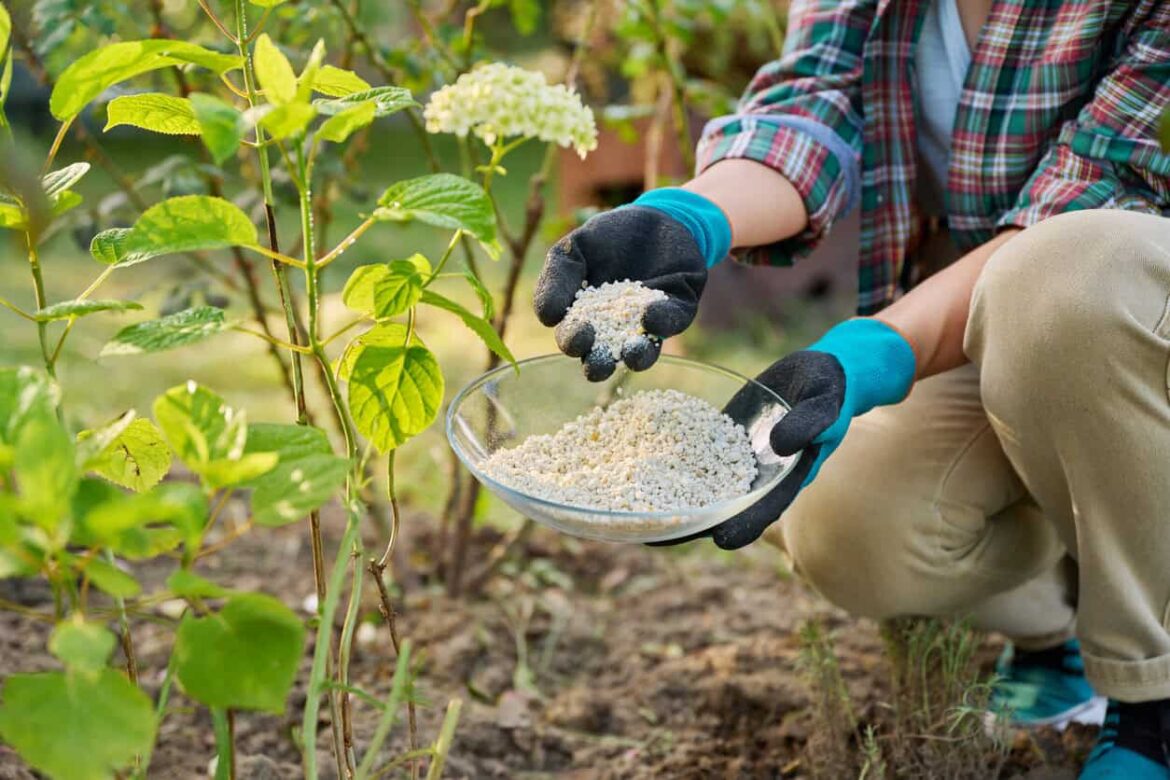10
Hydrangeas need to be fertilized in order to thrive and bloom profusely. There are a few things to keep in mind when doing so. We’ll show you how to do it right.
The right fertilizer makes all the difference
Fertilizing alone won’t help much if you’ve chosen the wrong location for your hydrangeas from the start. These magnificent plants thrive in slightly to moderately acidic soil. So check the pH value of the soil before planting.
- You should not use universal fertilizer for hydrangeas. This usually contains a lot of phosphorus, which the plant does not like at all. The appropriate fertilizer should therefore contain little phosphorus but a lot of nitrogen.
- It is best to use a hydrangea fertilizer that is specially formulated for these plants.
- However, if you don’t want to buy a separate fertilizer for each garden plant, an alternative would be a special fertilizer for hydrangeas, azaleas, camellias, and rhododendrons.
- Organic fertilizers are also suitable for hydrangeas. These include horn meal, horn shavings, coffee grounds, and compost.
- Organic fertilizers are also more cost-effective and environmentally friendly.
When should hydrangeas be fertilized?
When fertilizing hydrangeas, the most important thing is to do it regularly.
- In the garden, you should fertilize hydrangeas in the spring and then again in early summer.
- Potted plants should be fertilized at regular intervals from March to August. A liquid fertilizer is easier to use for this purpose. Once the plant is in full bloom, you can stop fertilizing. The plant then needs significantly fewer nutrients.
Special case: blue hydrangeas
There are actually no blue hydrangeas. The varieties are all either white, pink, or red. The blue color is created by treating the soil accordingly.
- For hydrangea flowers to turn blue, the soil must have a pH value of 4.0-4.5, i.e., be quite acidic.
- However, acidic soil alone is not enough. The plant also needs aluminum for the blue coloration. Hydrangea Blue is available in stores, but you can also sprinkle one or two tablespoons of potassium alum around the plant. The next rainfall will then allow the agent to seep into the soil.

